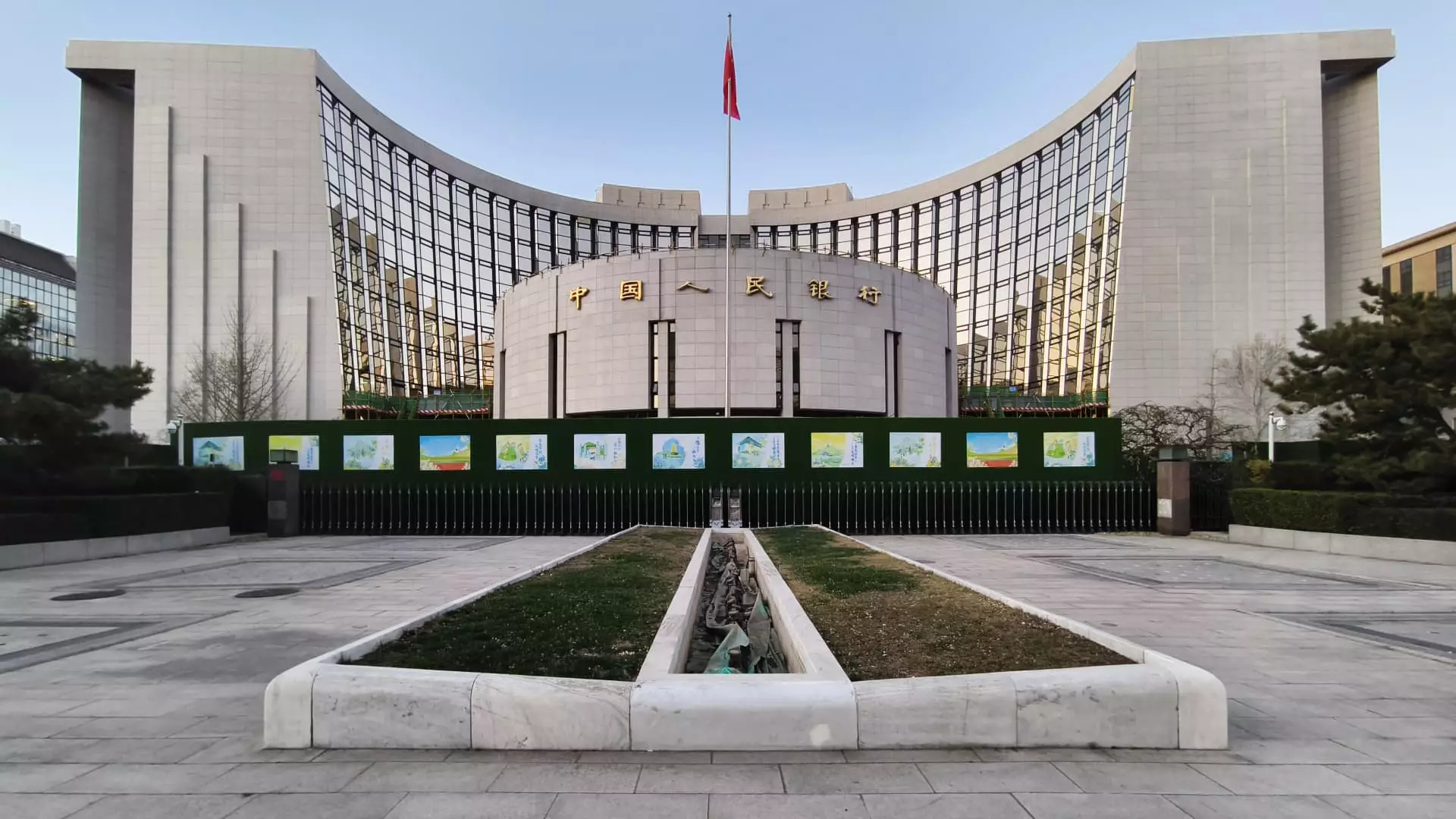China’s economic landscape is currently navigating turbulent waters as the government strives to stimulate growth while countering a depreciating yuan. In a notable move that reflects these ongoing challenges, the People’s Bank of China (PBOC) announced on Friday that it would maintain the one-year loan prime rate (LPR) at 3.1% and the five-year LPR at 3.6%. These interest rates are critical in determining borrowing costs for both businesses and consumers alike, with the one-year LPR primarily influencing corporate and individual loans, while the five-year LPR serves as a benchmark for mortgage rates.
This decision comes on the heels of a widely anticipated cut in interest rates by the U.S. Federal Reserve, which recently lowered its rates by 25 basis points. However, the Fed’s outlook for further reductions indicates a more conservative approach moving forward, projecting only two cuts for the year 2025, down from earlier estimates of four. This shift in U.S. monetary policy adds an additional layer of complexity to the planning of the PBOC, as Chinese officials must consider not only domestic economic conditions but also the implications of foreign interest rate movements on the yuan’s value.
According to market analysts, the lack of action from the PBOC regarding the yuan suggests a deliberate strategy. Farzin Azarm, managing director of equities trading at Mizuho Americas, emphasized that the central bank is likely taking a more hands-off approach. He posited that the direction of both the yuan and interest rates would be more reflective of broader market dynamics rather than direct interventions by the central bank at this time. This restrained approach reflects a balancing act: while the central bank recognizes the need for currency stability, it also must focus on stimulating domestic economic growth amid signs of persistent deflation and dampened consumer sentiment.
High-level discussions among Chinese officials have pointed toward an increased commitment to monetary easing and fiscal stimulus measures. This indicates a recognition of the urgency required to address pressing economic issues, including weakened consumer spending and an ongoing slump in the property market. Analysts previously anticipated that the PBOC would implement cuts in their benchmark rates, following rapid adjustments made earlier last year, which include significant reductions in both short- and long-term lending rates.
Given the current economic climate, many experts anticipate a further depreciation of the yuan in 2024. This sentiment is compounded by uncertainties regarding the international trade landscape, particularly with the potential economic policies of the incoming U.S. administration under President-electDonald Trump, which may involve escalated tariff measures. Consequently, the interplay between the Fed’s actions and the PBOC’s responses holds strategic significance for China’s broader economic framework.
Forecasts suggest that while the PBOC is expected to continue its trajectory of monetary easing through lower interest rates, the more substantial impact on economic recovery may arise from fiscal measures. Yan Wang, chief strategist for emerging markets and China at Alpine Macro, suggests that fiscal flexibility provides the Chinese government with valuable tools to stimulate growth amid these challenging economic conditions.
The decision to keep the lending rates unchanged signifies the PBOC’s cautious approach toward fostering a stable economic environment while managing the pressures surrounding the yuan’s valuation. With an evolving monetary landscape both domestically and internationally, the central bank’s upcoming strategies will likely emphasize the need for a harmonious balance between growth stimulation and currency stabilization. As 2024 unfolds, all eyes will be on China’s fiscal and monetary actions, as they will play a pivotal role in navigating the challenges that lie ahead.


Leave a Reply